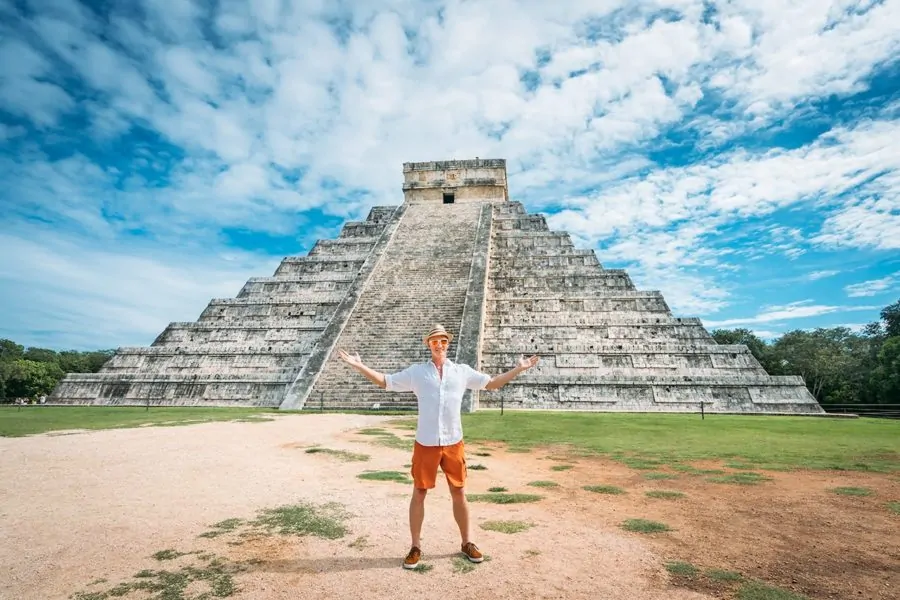
Chichen Itza, Mexico
The history of Chichén Itzá is not for the faint of heart. These ancient Mayan temple ruins in Mexico are shrouded in mystery and brimming with gruesome stories.
Once you finally get past an army of local vendors at the entrance, the ancient stone carvings of fearsome creatures and bloodthirsty warriors at Chichen Itza inspire awe.
This pre-Hispanic city (and UNESCO World Heritage Site) has a fascinating 1,000-year-old history. It is the second most visited archaeological site in Mexico, partly due to its close proximity to Cancun.
Located in the Yucatan Penninsula, the ruins are extensive and cover 740 acres. Many sections have still never been excavated.
While wandering around this massive archaeological site in Mexico, I kept wondering what hidden treasures lay undiscovered beneath my feet.
In this travel guide, you’ll learn tips for visiting Chichen Itza, along with some interesting history about the most popular Mayan ruins in Mexico.

Hi, I’m Matthew Karsten
I’ve been traveling the world for 10+ years as a professional photographer & writer. I hope you enjoy my Chichen Itza tips! If you find them useful, using my affiliate links will give me a small commission, at no extra cost to you. Thanks!
Chichen Itza Mayan Ruins Guide
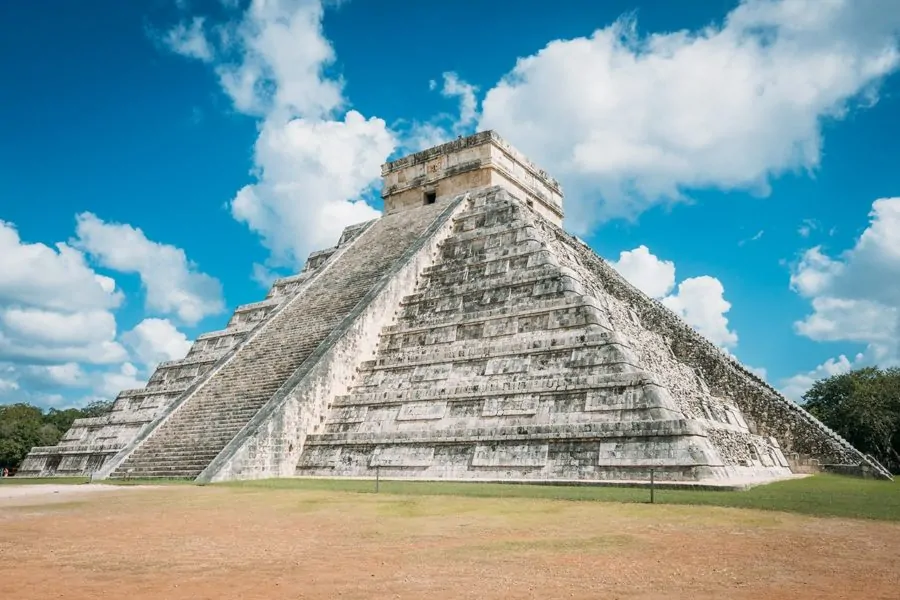
The History Of Chichen Itza
One thing that makes the Chichen Itza so intriguing, other than the giant stone pyramid, is the mysterious decline of the Maya people themselves.
By the time of the Spanish conquest of the Maya, this great city and others like it were virtually ghost towns.
Historians have several theories as to why. Overpopulation may have depleted environmental resources. A great drought or another catastrophe may have wiped out the civilization.
Competing city-states were constantly at war too — the Maya may have simply done themselves in.
In any case, Mexico’s most famous ruins are astonishingly well-restored site compared to other Mayan ruins in the region. Which is why it’s considered one of the New 7 Wonders Of The World.

Chichen Itza Tour
Skip the line at Mexico’s most famous archaeological site, visit a colonial town, and swim in a cenote.
Opening Hours & Entry Fees
The ruins of Chichen Itza are open daily from 8am to 4:30pm. However remember that the drive to the ruins takes about 45 minutes from Valladolid, or 2.5 hours from Cancun. If you pay the entrance fees in cash, only pesos are accepted, but you’ll save 10% because credit cards cost extra.
Chichen Itza Entrance Fee: 242 MXN ($11 USD)
Chichen Itza Parking Fee: 30 MXN ($1.50 USD)
Chichen Itza Highlights

El Castillo Pyramid
Once you enter Chichen Itza, you can’t miss the 98-foot tall pyramid Temple Of Kukulkan (aka “El Castillo”) which dominates the northern part of the city. Not as large as the pyramids of Giza, but impressive nonetheless!
Kukulkan is a feathered snake deity in the Mayan religion. The pyramid is guarded by enormous carved serpent heads at the base of the stairs.
The Mesoamerican fascination with stars and planets mean the pyramid’s four stairways represent the four points of a compass. There are 365 steps too, one for each day in the solar calendar.
Nine terraces probably symbolize the Maya belief in a nine-level heaven too.
If you REALLY want a treat, visit El Castillo in March or September during the annual equinoxes. At sunset, a play of light and shadow creates the eerie effect of a snake gradually slithering down the staircase…
Scientists recently discovered this pyramid actually has two more pyramids inside it.
Clapping At The Pyramid
One cool trick to try in front of the temple is to clap as loud as you can. The sound echoes up the side of the structure, mimicking the sound of the local Quetzal bird, a spiritually important animal to the ancient Mayans.
This feature was engineered into the pyramid on purpose, which is pretty crazy to think about!
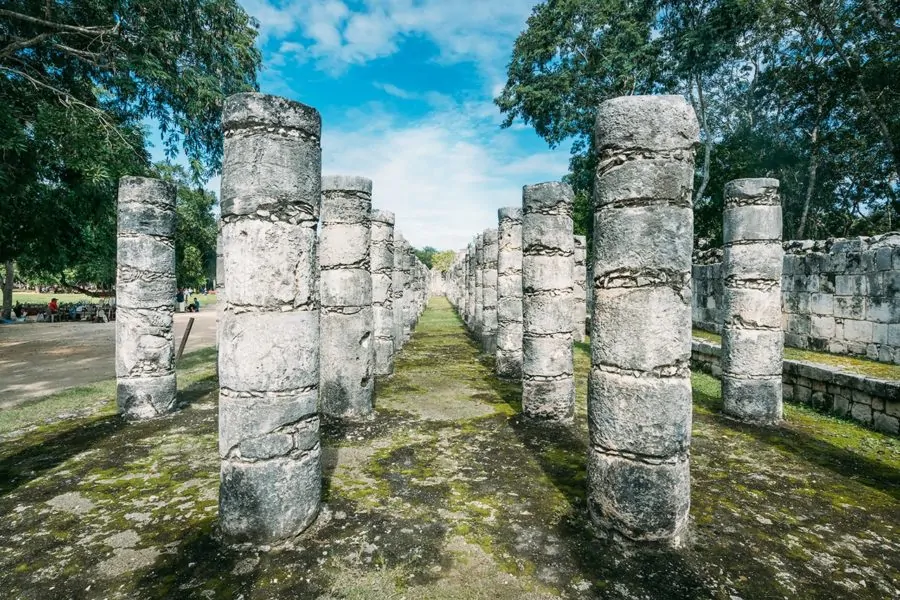

Temple Of The Warriors
The Temple Of The Warriors is another impressive structure at Chichen Itza. Some of the 200 columns on the south side depict warriors in bas-relief.
The columns once supported a roof system that is long gone.
Also known as the Hall of the Thousand Columns, this grand space might have been a meeting place or an indoor market.
A Chac Mool tops the broad staircase, distinctive statues found throughout the Yucatan Peninsula. Reclining figures holding bowls with their heads turned at a 90-degree angle and propped on their elbows.
They might represent temple guardians or slain warriors bearing gifts to Chac, the god of rain.
In Maya religious ceremonies, stone dishes probably held offerings such as incense, tobacco, tamales or tortillas. In Aztec rituals, they more likely held human hearts.


The Maya Ball Court
Off to the left of the main pyramid, you’ll find the famed Maya ball court. While many sites include ball courts, the one at Chichen Itza is the largest in the world.
Maya athletes played a game where the object was to put a rubber ball (representing the sun) into a small stone circle perched very high on a wall, without using your hands OR feet.
Some carvings suggest that the winning team’s captain was decapitated, which was a sign of honor. The ball game is over 3,500 years old, making it the first organized game in the history of sports.
Some of the games were played to resolve arguments between rival cities or as an alternative to all-out war.
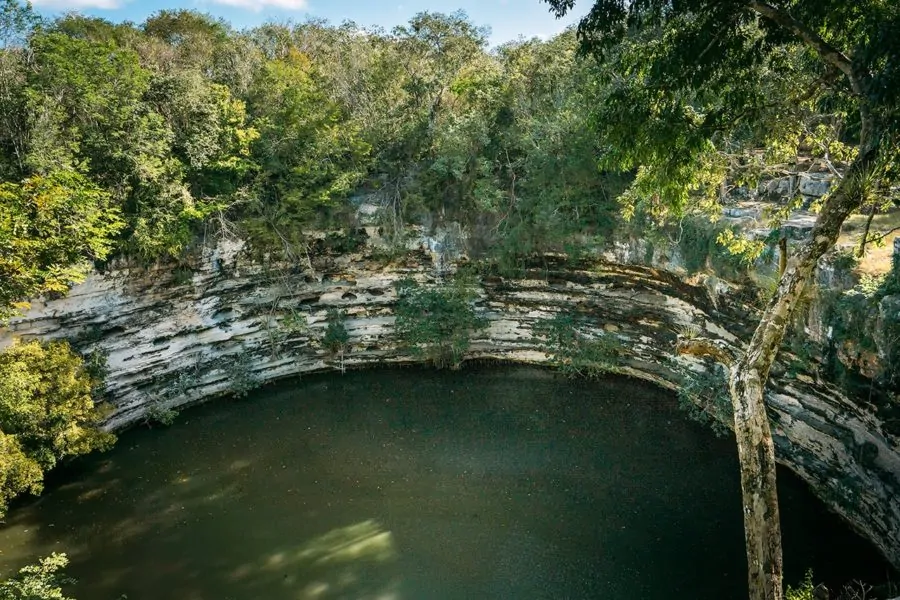
Cenote De Los Sacrificios
Chichen Itza means “mouth of the well of Itza” in the local Maya language. One possible translation of Itza is “enchanted water.” The Yucatan is covered in cenotes — distinctive limestone sinkholes that form natural pools.
Cenotes have deep spiritual significance for the Maya. Many scholars believe Chichen Itza was built solely because of the large cenote located here, which provided people with fresh water.
Cenote de los Sacrificios (also known as the Sacred Cenote) measures about 200 feet across with sheer cliffs that drop to the water’s surface. During severe droughts, worshippers tried to appease their rain god Chac by sacrificing special items or people (!) they weren’t very fond of.
Dredging this cenote uncovered thousands of artifacts made of gold, jade and copper. Numerous human skeletons with sacrificial wounds littered the depths as well…
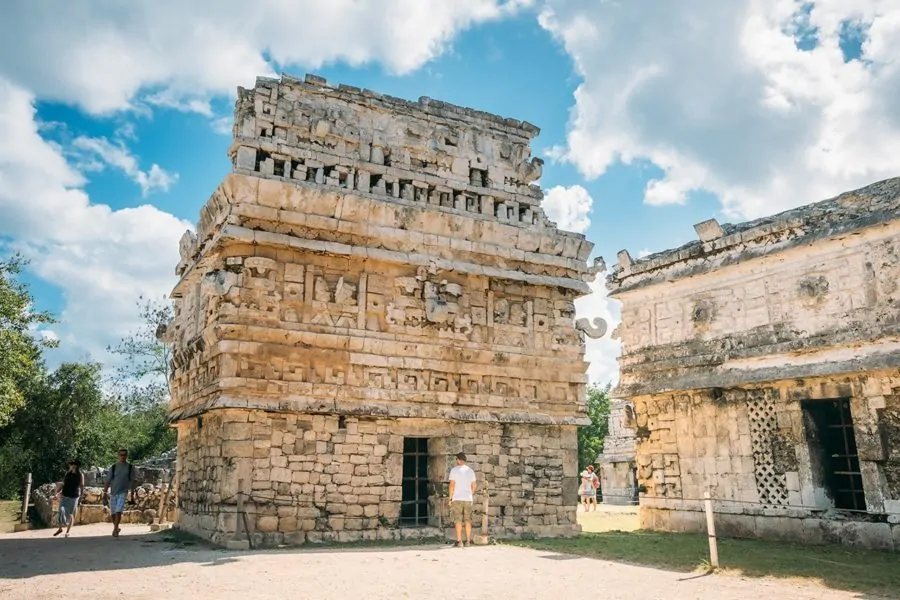
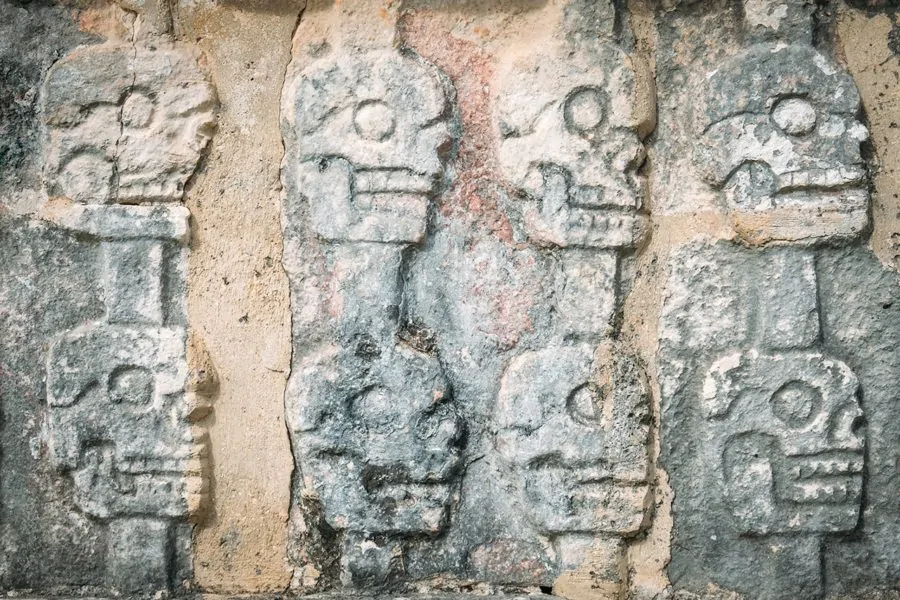
More Cool Archeological Structures
Tzompantli means “wall of skulls,” and this next attraction lives up to its name. The large platform supported stakes on which decapitated human heads were impaled on top of each other.
The unfortunate victims were enemies defeated in battle or prisoners of war sacrificed to the gods. Whimsical skull carvings around the base are a nice touch.
This exhibit would have scared the living daylights out of would-be enemies.
A more elaborate platform nearby is known as House of the Eagles. Its motif is similarly creepy. Eagles and jaguars, symbolizing Toltec sacrificial warriors depicted clutching human hearts.
One of the most interesting structures is El Caracol, which functioned as an observatory. There are many more fascinating stops at Chichen Itza, so plan to spend at least 3 – 4 hours to see it all.
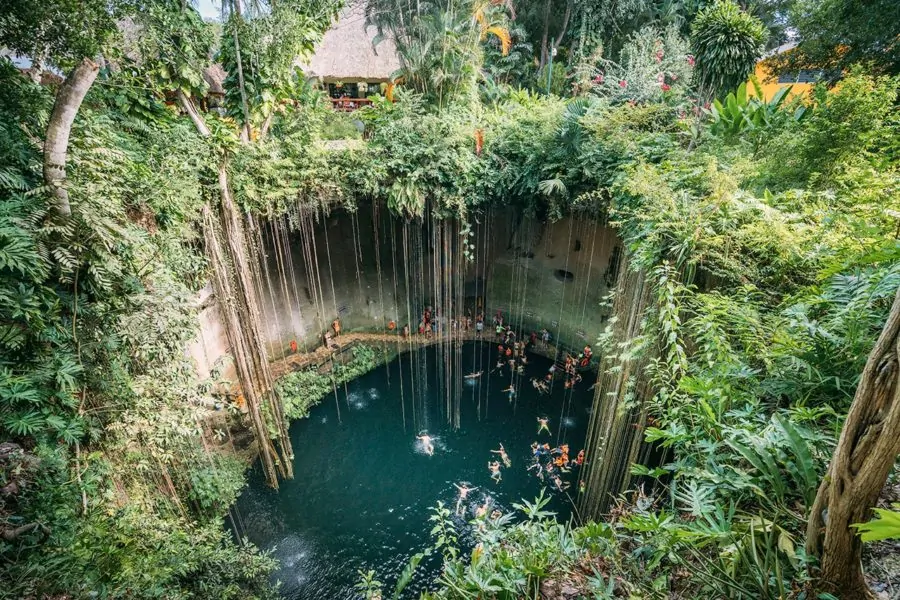
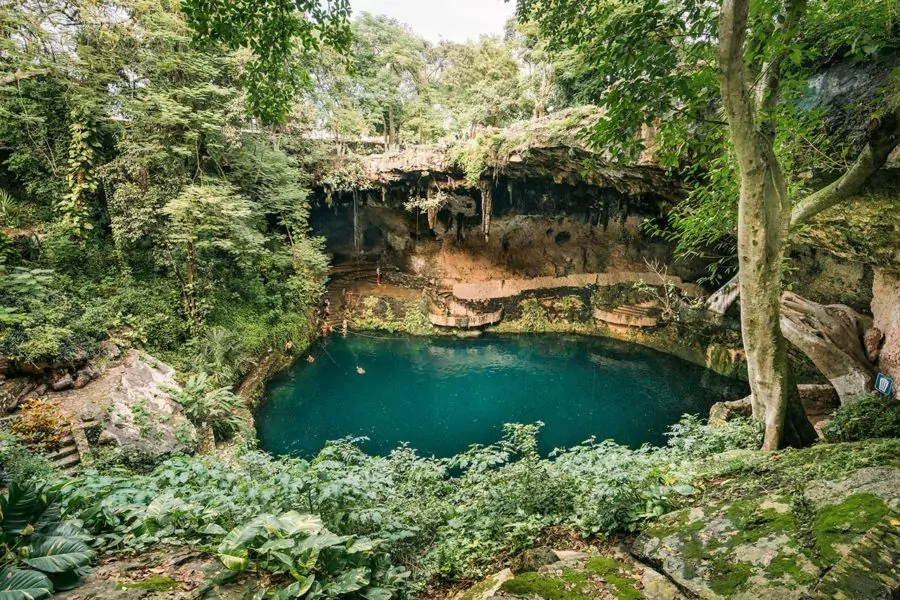
Cenotes Near Chichen Itza
While you can’t swim in the cenote at Chichen Itza itself (unless you want to join the skeletons at the bottom!) there are others nearby where you can.
The closest cenote, and most popular with tour buses, is called Ik Kil. While it’s a pretty one, it’s always packed with people and feels like a tourist trap. I’d probably skip it.
If you want a more authentic cenote experience, I’d recommend cooling off in the cenotes near the town of Valladolid. These include Cenote Zaci, Cenote Dzitnup, or Cenote Suytun.
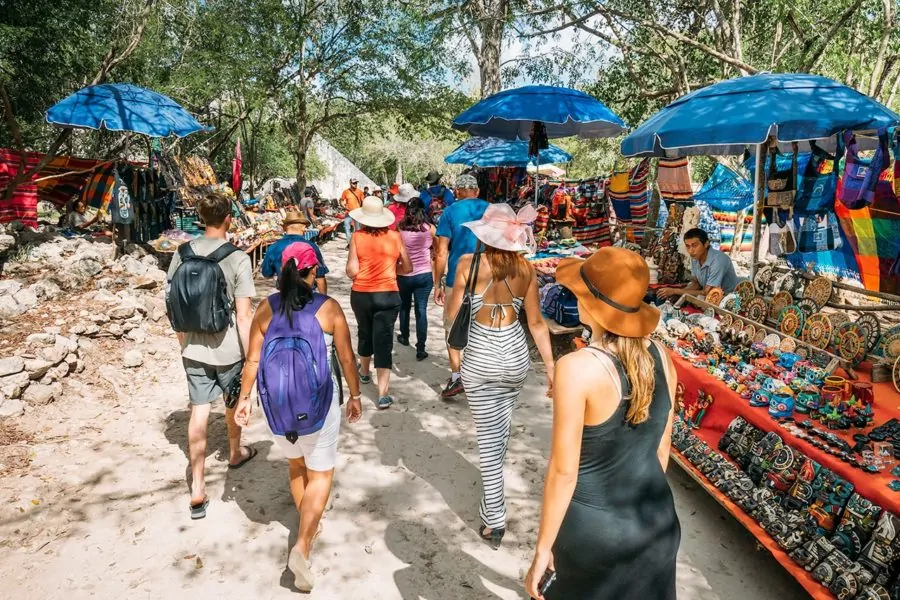
Getting To Chichen Itza
Rental Car
The best site to book your car is Discover Cars. They search both local and international car rental companies to help you find the best possible price. This is the easiest way to rent a car in Mexico.
CANCUN – Chichen Itza is 197 km (2.5 hours) from Cancun by car.
PLAYA DEL CARMEN – The ruins are 181 km (2 hours) from Playa del Carmen.
MERIDA – Chichen Itza is 119 km (1.5 hours) from Merida by car.
VALLADOLID – Chichen Itza is 45 km (45 minutes) from Valladolid by car.
If you’re looking for a more adventurous route from Cancun, the “libre” road runs parallel to the main toll highway and goes through a bunch of smaller villages for a more authentic feel of Mexico.
By Bus
Mexican ADO Bus Service from Cancun to Chichen Itza costs about $202 MXN ($9) one way and takes 3 hours. From Valladolid, there’s bus service every 30 minutes for about $26 MXN.
Collectivo Taxi
Colectivos (shared taxis) leave the town of Valladolid from a lot just east of the bus station and cost about $35 MXN ($2 USD).

Rent A Car In Mexico
Search both local and international car rental companies to help you find a good deal.
Chichen Itza Tours
If you’re the type of person who prefers joining a tour, there are guided tours of the Chichen Itza Ruins, some of which begin from Cancun and include transportation.
- Skip the line at Chichen Itza, visit a colonial town and swim in a cenote: ➜ BOOK IT HERE
- Visit Chichen Itza, plus the ruins of Coba, and stop at a cenote: ➜ BOOK IT HERE
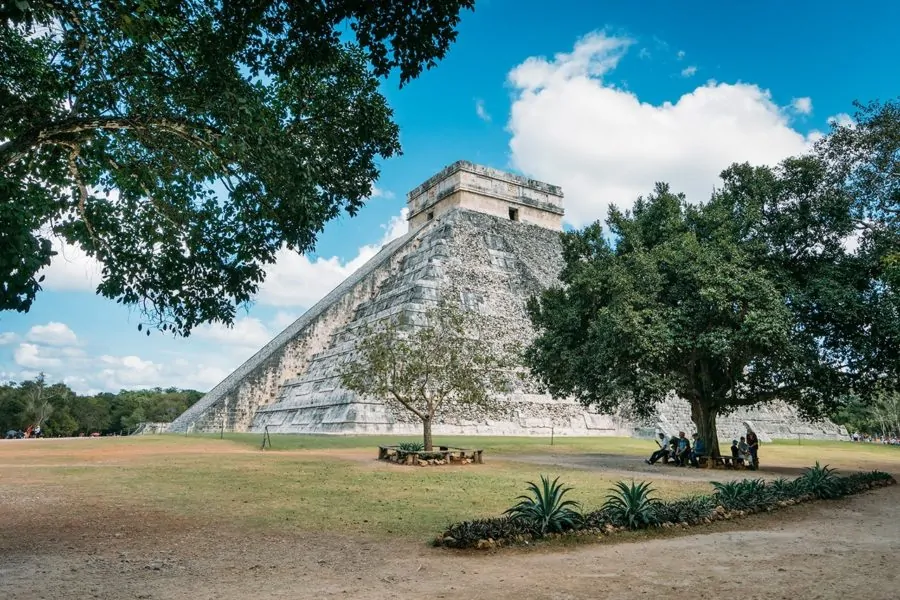
Chichen Itza Conservation Programs
A group of scientists from the National Autonomous University of Mexico (UNAM) has been researching the existence of a second structure located inside the Kukulkan pyramid. They found the pyramid-within-a-pyramid using three-dimensional electrical tomography.
It’s believed the current structure was built on top of the other one. Both sit on top of an underground cenote cave filled with water. Archaeologists continue studying the site, and you may be able to see some of their excavations as we did behind the main pyramid.

Tips For Visiting Chichen Itza
- You can rent a luggage locker at Chichen Itza for $40 MXN to hold large bags or valuables.
- Chichen Itza has a “light & sound show” that starts at 7pm in the fall and winter or 8pm in the spring and summer. It’s included in the price of admission.
- Try to visit first thing in the morning when they open, or late in the afternoon to avoid the huge tour-bus crowds.
- Consider splurging on a guided tour. There are information plaques at each attraction, but nothing like the insight you’ll get from a local guide.
- Tourists can no longer climb to the top of the Kukulkan Pyramid due to UNESCO status and a few deaths over the years from falling.
- The sun is unrelenting. Wear a hat, apply sunscreen and take plenty of water. If possible, arrive as soon as the gates open in the morning.
- The mediocre food on-site is expensive. You can get much better stuff down the street at the village of Pisté for a lot less.
- Avoid the vendors selling souvenirs at the entrance. Yes, tourists support their livelihood, but many of them sneak in without authorization, and it’s become a bit of a circus.
Chichen Itza Map

| Travel Planning Resources For Mexico |
|---|
| Packing Guide Check out my travel gear guide to help you start packing for your trip. Book Your Flight Ready to fly? Here’s how I find the cheapest airline flights. Rent A Car Discover Cars is a great site for comparing car prices to find a deal. Cheap Accommodation Learn how I save money booking hotels & vacation apartments. Protect Your Trip Don’t forget travel insurance! Protect yourself from possible injury & theft abroad. Read why you should always carry travel insurance. |
Enjoy This Article? Pin It!
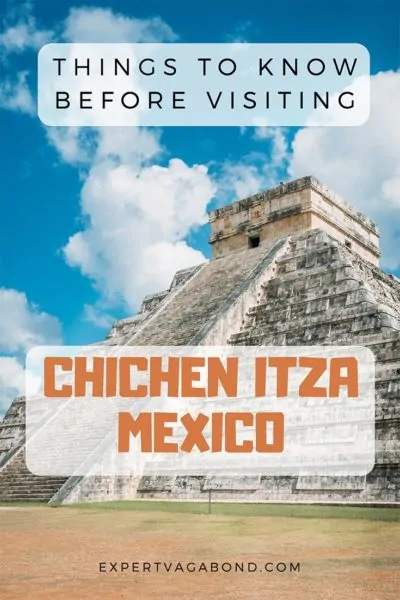

READ MORE MEXICO TRAVEL TIPS
I hope you enjoyed my guide to the Mayan ruins of Chichen Itza! Hopefully you found it useful. Here are a few more wanderlust-inducing articles that I recommend you read next:
- Check out my top highlights in Playa del Carmen if you’re planning to stop by.
- Road tripping the Riviera Maya? Learn about my favorite things to do in the Yucatan Peninsula.
- Save money on your vacation with my ultimate budget travel guide to Mexico.
- Ready to explore more Maya pyramids? These are the best Mayan ruins in Mexico
- Upgrade your camera with tips on the best travel cameras for any budget.
Have any questions about the Mayan ruins of Chichen Itza? What about other suggestions? Join the conversation on Facebook, Instagram, or Twitter to share!
